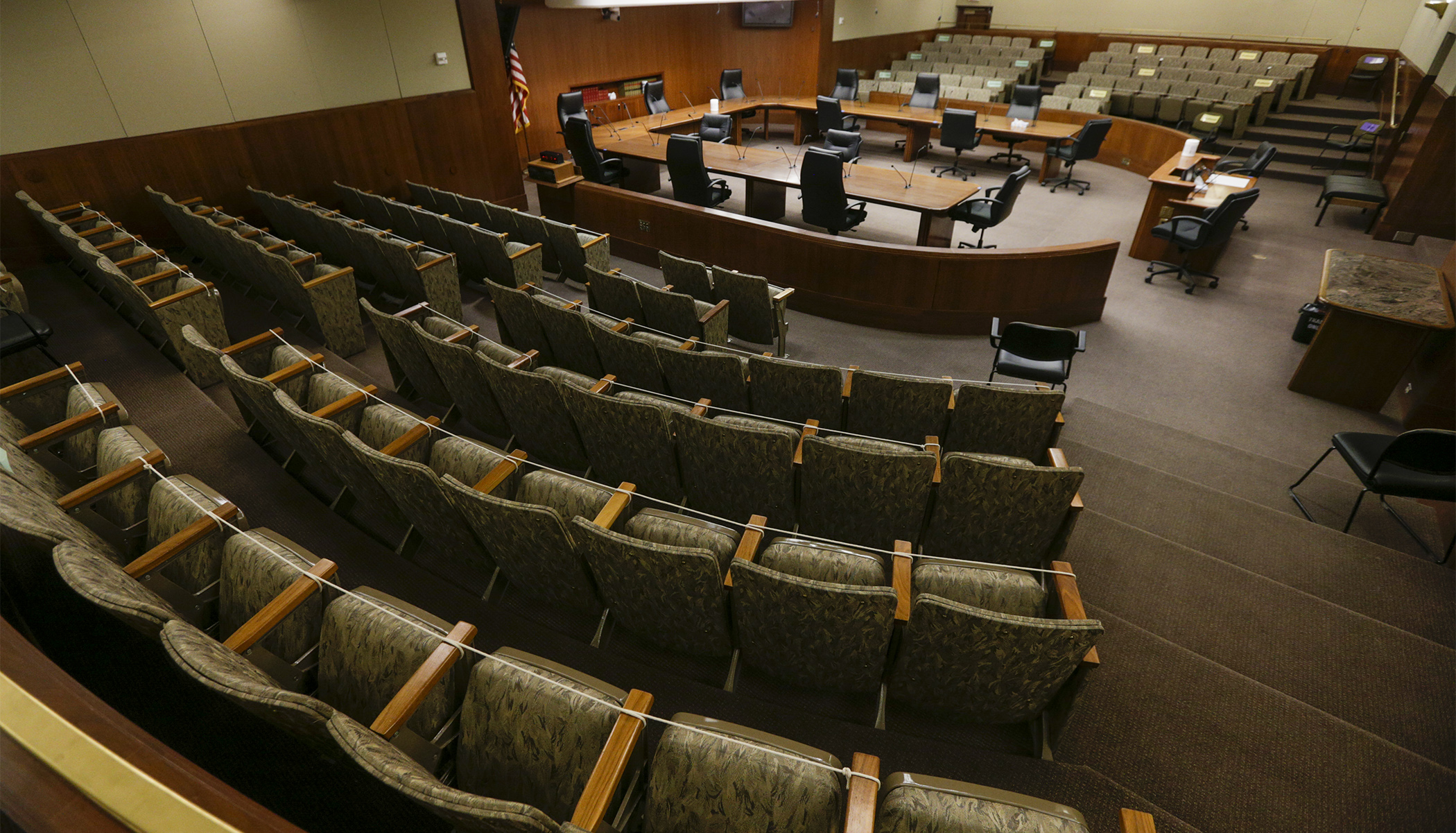Remote rules meeting a likely preview for things to come

For the first time in its history, the Minnesota House of Representatives on Wednesday held an official committee meeting remotely, with members convening over the phone to conduct business and take votes.
The House Rules and Legislative Administration Committee met to learn more about such “remote hearings” and hear how the House could implement them in the coming days and weeks to continue its work amid the COVID-19 outbreak.
House Majority Leader Ryan Winkler (DFL-Golden Valley), the committee chair, said he is reluctant to meet remotely but sees no alternative given the present circumstances requiring social distancing.
“We have to keep staff and legislators safe and healthy during this pandemic,” Winkler said. “We need to continue doing the work of the public and we need to do so in as open and transparent manner as we can.”
The meeting, which lasted about 30 minutes and seemed to run smoothly, was also something of a test. Winkler said he expects other House divisions and committees to begin using remote hearings in the days and weeks to come.
Wednesday’s hearing was available for listeners to live stream on the House website, and on House Public Information Services’ Facebook and YouTube pages.
Barry LaGrave, director of the nonpartisan House Public Information Services, told members his office was covering the hearing in much the same way it usually did, with staff members providing graphics to accompany the audio broadcast, in this case, and a writer listening in to document the proceedings. He said the unusual circumstances only “minimally” impacted how the meeting was covered.
Winkler said the House is exploring technologies, such as Zoom and Microsoft Teams, which would allow video of future remote hearings, but has not yet reached a decision on that issue.
“We do intend to move forward with a video-based committee hearing process as our next step, but we wanted to use available House technology to get started on this as quickly as we can,” Winkler said.
Matt Ehling, a Minnesota Coalition on Government Information board member, was the only member of the public to testify. He encouraged the House to continue following open meeting laws by making the remote hearings open to the public for free over the Internet.
Members also heard from Kelly Knight, director of the House Human Resources Department, on policy changes for staff related to remote work and emergency sick leave meant to help them operate safely during the crisis. The committee voted to approve those resolutions.
New rule
The committee met under the provisions of Rule 10.01, adopted during the March 26 House floor session, which allows remote voting during House hearings and creates more flexibility in how those meetings can be held. The rule can only be used during a “peacetime emergency related to infectious disease COVID-19.”
The rule says the House may use “distance voting, remote electronic voting, or voting by other means” for floor and committee procedures. It also requires the opportunity for public testimony.
In a memo regarding the rule, House Chief Clerk Patrick Murphy said it allows House leaders to design a remote hearing process for committees but is non-specific so information technology staff can determine how best that can be done.
“Think of it like this,” Murphy wrote. “These are not remote meetings. They are regular meetings, which allow remote participation. Our usual notices should apply. Different methods of ensuring public access, testimony, and mark-up will need to be developed. Specific methods used in a given on-line hearing may be refined, shifted, and updated to work better.”
Winkler said remote hearings should only be used under extreme circumstances such as a global pandemic and are not being considered beyond the current situation.
“This is not precedent setting,” Winkler said. “But it is an historic moment.”
Related Articles
Search Session Daily
Advanced Search OptionsPriority Dailies
Ways and Means Committee OKs proposed $512 million supplemental budget on party-line vote
By Mike Cook Meeting more needs or fiscal irresponsibility is one way to sum up the differences among the two parties on a supplemental spending package a year after a $72 billion state budg...
Meeting more needs or fiscal irresponsibility is one way to sum up the differences among the two parties on a supplemental spending package a year after a $72 billion state budg...
Minnesota’s projected budget surplus balloons to $3.7 billion, but fiscal pressure still looms
By Rob Hubbard Just as Minnesota has experienced a warmer winter than usual, so has the state’s budget outlook warmed over the past few months.
On Thursday, Minnesota Management and Budget...
Just as Minnesota has experienced a warmer winter than usual, so has the state’s budget outlook warmed over the past few months.
On Thursday, Minnesota Management and Budget...